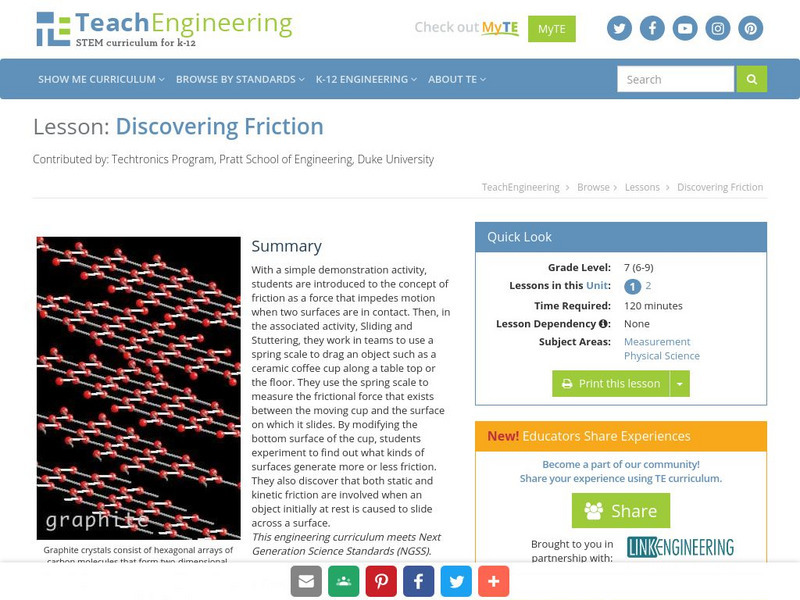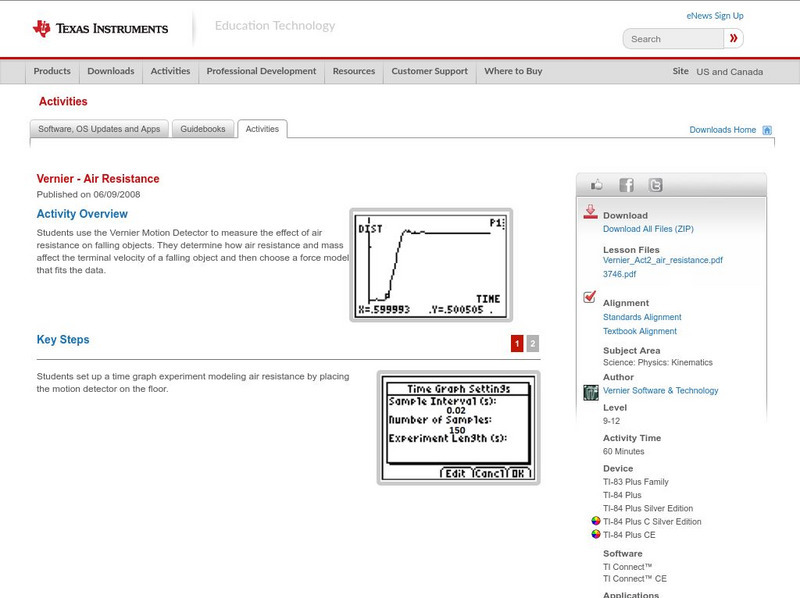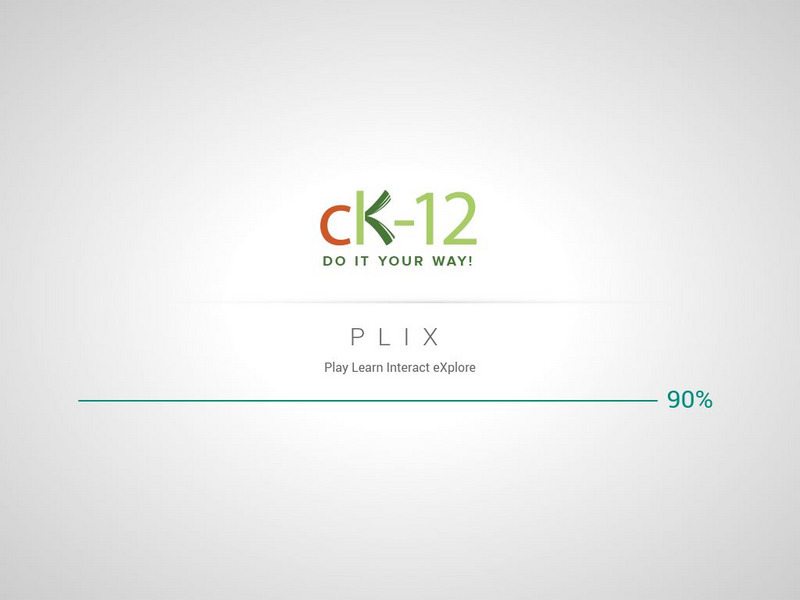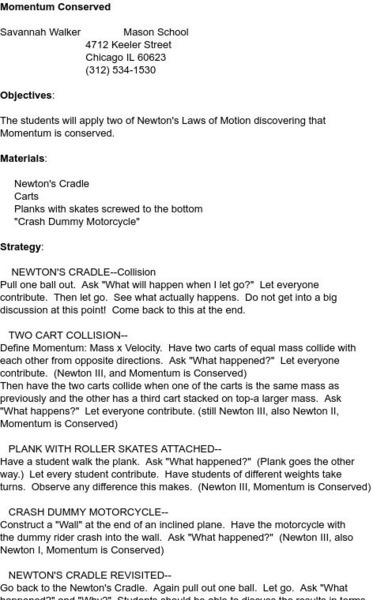TeachEngineering
Teach Engineering: Discovering Friction
With a simple demonstration activity, students are introduced to the concept of friction as a force that impedes motion when two surfaces are in contact. Then, in the Associated Activity (Sliding and Stuttering), they work in teams to...
PBS
Pbs Kids "Zoom": Rube Goldberg Machine Building
This site from PBS Kids "Zoom" provides great ideas for building a Rube Goldberg machine around the house from common items. The information is complete with materials needed, instructions, and results on a level for elementary kids.
Texas Instruments
Texas Instruments: Centripetal Acceleration
For this activity, students observe the centripetal acceleration of an object in uniform circular motion. Relate the changes in velocity and radius to the centripetal acceleration.
Texas Instruments
Texas Instruments: Air Resistance
Students use the Motion Detector to measure the effect of air resistance on falling objects. They determine how air resistance and mass affect the terminal velocity of a falling object and then choose a force model that fits the data.
TryEngineering
Try Engineering: Blast Off
Hands on activity where students focus on aerospace engineering to investigate space flight from the viewpoint of an engineer. They design, build, and launch their rocket, then share their experiences with the class.
Middle School Science
Middle School Science: Balloon Powered Race Cars
An idea developed by a physical science teacher who applied Newton's Laws of Motion in creating a balloon powered race car. Find simple objective, materials, rules, and procedures.
PBS
Pbs Learning Media: Balloon Car
Make 4-wheeled, air-powered cars that jet across the floor. Experiment with the design process and thrust in this activity from Design Squad Nation.
Science Education Resource Center at Carleton College
Serc: Maximizing Kinetic Energy: An Investigation Using Marbles
Using marbles to construct a marble run, students will learn about projectile motion, kinetic energy, potential energy, final velocity, and forces.
Science Education Resource Center at Carleton College
Serc: Water Bottle Rockets Understanding Energy
In this activity, students will design and construct a water bottle rocket. Students will demonstrate understanding of a good experimental design and analysis of results.
Science Education Resource Center at Carleton College
Serc: Investigating Inertia
In this investigation, students will perform a simple ordering activity and demonstration to determine what inertia is and recognize how inertia affects objects. They will compare and contrast the masses of objects to predict the...
Science and Mathematics Initiative for Learning Enhancement (SMILE)
Smile: Lab Work Forces & Acceleration
The Illinois Institute of Technology provides this site. The site contains a graphing activity which illustrates that a constant force exerted upon an object results in constant acceleration. Rolling carts and stopwatches are used to...
TeachEngineering
Teach Engineering: What a Drag
Students learn about friction and drag - two different forces that convert energy of motion to heat. Both forces can act on a moving object and decrease its velocity. Students learn examples of friction and drag, and suggest ways to...
Scholastic
Scholastic:magic School Bus Themes Index
Magic School Bus cross referenced by themes to provide quick access to many activities and references.
CK-12 Foundation
Ck 12: Plix Series: Friction
[Free Registration/Login Required] Use given friction formulas and an interactive diagram for an inclined plane to solve a motion problem. After the activity, answer a challenge question to check for understanding.
Science Education Resource Center at Carleton College
Serc: Using Your Marbles: Making Energy Work for You
This activity is based on the common experiment of running a marble down a ramp to do work on a cup. Students will be able to see the relationship between mass and energy of the marble and the ramp height.
Quia
Quia: Newton's Laws Quiz
A short quiz on Newton's famous laws of motion. Has ten multiple-choice questions.
PBS
Pbs Learning Media: Spin a Spiral Galaxy
This interactive activity from NOVA Online lets you spin a spiral galaxy, including our own Milky Way. It demonstrates that what you can learn from visible light observations of a galaxy is largely determined by the angle from which you...
Exploratorium
Exploratorium: Snacks
Exploratorium's snacks aren't edible, but they are good! Use your science skills to discover gravity, learn about biology, do fun experiments.
Science and Mathematics Initiative for Learning Enhancement (SMILE)
Smile: Momentum Conserved
This site by the Illinois Institute of Technology gives a Lab activity in which students use a variety of toys to discover Newton's second law and momentum conservation. Newton's cradle, skate boards, and a toy motorcycle are incoporated...
















